|
|
Home
I
Person
I
Last
Updates
I Email
I
Exchange
Rates
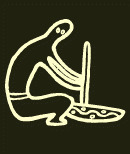 |
This
trip went from Perth to Cue, which is situated 650
kilometres North of Perth. Driving up Brand Highway (along
the coast), you’ll eventually get to Geraldton. We had an
overnight stay in Northampton. Most pubs have some sort of
accommodation to offer (motel type)... |
|
|
W i l g i e M i a -
Geraldton, Northampton, Mullewa, Yalgoo, Mt Magnet, Cue
|
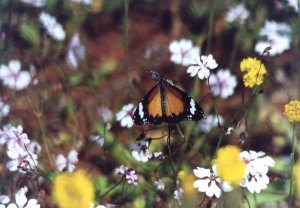 |
This
trip went from Perth to Cue, which is situated 650
kilometres North of Perth. Driving up Brand Highway (along
the coast), you’ll eventually get to Geraldton. We had an
overnight stay in Northampton. Most pubs have some sort of
accommodation to offer (motel type). Northampton is quite a
small town with a few churches build by a Priest called
Monsignor Hors?, who had made it his mission to build
churches around the Western Australian country side, with
his bear hands and the material found in the region.
|
|
The
style of these churches can be described as somewhat mixed.
A bit of oriental and European architecture all mixed up,
quite interesting to visit. He also designed the one big
catholic church in Perth, which looks a bit more
conventional. We also visited some old prison ruins close to
Port Gregory. The countryside around this area is green and
lucious and quite different from the sort of views we
enjoyed later, on our way to Cue. From Northampton we had a
short country drive, until we hit Mullewa and Road 123. In
Mullewa we could enjoy yet another Monsignor Hors church. After
a short tea break we went on to Mount Magnet, a big mining
town, as most of the outback towns are. As we passed Mt
Magnet and its hills of excavated earth with different
layers of soil types, the countryside turned truly arid for
the first time.
|
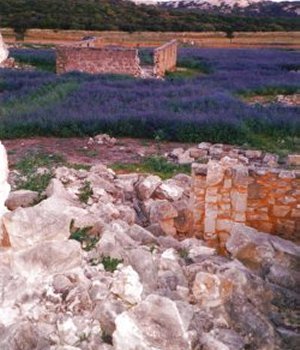 |
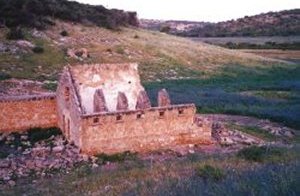 |
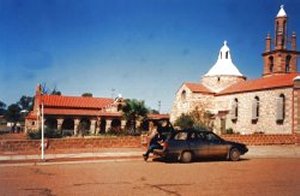 |
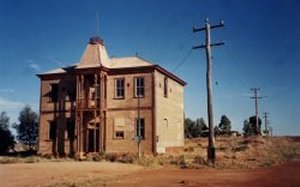 |
Low
growing shrubs, orange to red earth, some wildflowers and
big salty lakes that had a pink to white rim. The vegetation
around these lakes is quite special aswell.
The
colours of specialised low growing shrubs are dark purple,
similar to the vegetation type around the wetlands down in D’Entrecasteaux
National Park (South of Perth). Finally we reached Cue an
even smaller town in comparison to Mt Magnet. Cue has one
pub with accommodation and this is where we stayed at.
|
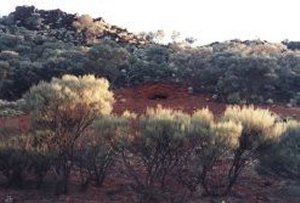 |
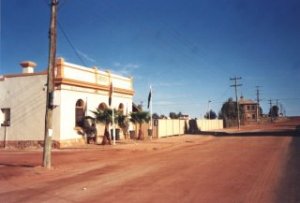 |
|
Comfortable
and friendly, which is generally the case when travelling
around the Western Australian country side. We met an
elderly couple, about seventy years of age at the breakfast
table. They were on their way to Carnavon, another 600
kilometres up North. Wonderful place with white sandy
beaches and the sea, what more would you want. We were quite
impressed, cause they had already been on a long drive and
it can get quite tiring even for younger drivers.
|
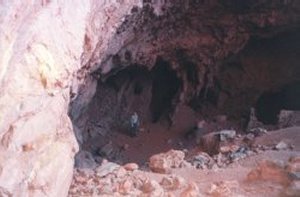 |
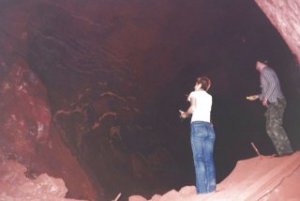 |
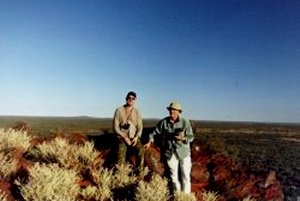 |
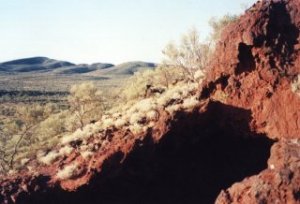 |
This
is something that I have noticed about the senior generation
in Western Australia, they are all much fitter than their
equals in Germany. Must be a climate thing. Anyway,
on that day we drove down to Wilgie Mia which means
"Place of Ochre" in the language of the Aboriginal
people, the true holders of the land. This mine is said to
be the oldest in the worlds history. The ochre pigments are
used for traditional ceremonies and paintings and were mined
and traded with around Western Australia and sometimes
across state borders.
|
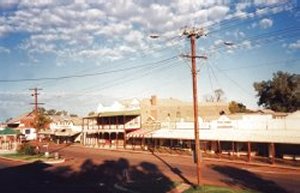 |
 |
|
The
story told by the Aboriginal tribe in this area was that the
mine came into being by big kangaroo-spirit falling onto the
earth.As it impacted, it was killed by the force and its
blood was spilled and sunk into the earth as red ochre
aswell as its bowl which became the yellow and green ochre.
This is only a vague recollection of what I red somewhere,
but nevertheless interesting. As we entered the mine and got
to the main cave and there it was: a big dead Kangaroo with
a long spine and the skin only covering the left over
bones.
|
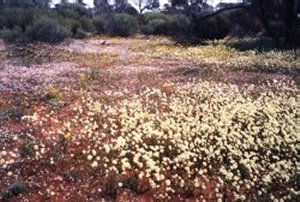 |
|
Maybe
it was there to remind us of the story and the sprits. We
did not find any green ochre but wonderful looking yellow
veins through the red stone walls. If you ever visit this
place, you may want to wear some old clothing, because the
ochre sticks on everything. It’s an amazing place anyway.
The way there is a bit straining if you are not in a
4-wheel-drive and even then I could imagine it to be quite
humpy. A 70 kilometre track leads there. Beware of rainy
days. The road can get quite difficult. Oh, and take a good
map, ‘cause the signs are a bit confusing at times. As we
drove back, we experienced the greatness of the outback
sunsets. It seems, as if the land gets dipped into a
yellow-orange and red colour pot. The night active animals
of the outback red kangaroos emus seem to wake up to this
sun spectacle, making the drive back a bit complicated but
unforgettable. On our way back to Perth from Cue we went
down south further inland via the Great Northern Highway. On
this route we saw the most wildflowers. Beds of yellow, pink
and white sticky everlastings and other flower types. A
magical sight to me. We also stopped at New Norcia and old
Monastery town. We visited the Monastery and had a look at
the local arts and crafts display inside. This is the place
where "Perthians" get their good bread and buns.
This trip opened my eyes for the outback and its silent
beauty. |
|
Last
edited 19-06-01
Photo
Nr. 01, 03, 05, 06, 11, 13, 14 by Stephen Goss
Photo
Nr. 08, 09, 02, 04, 15, 10 by P. G. Goss
©
A.Goss, April 2001
|
|
|













